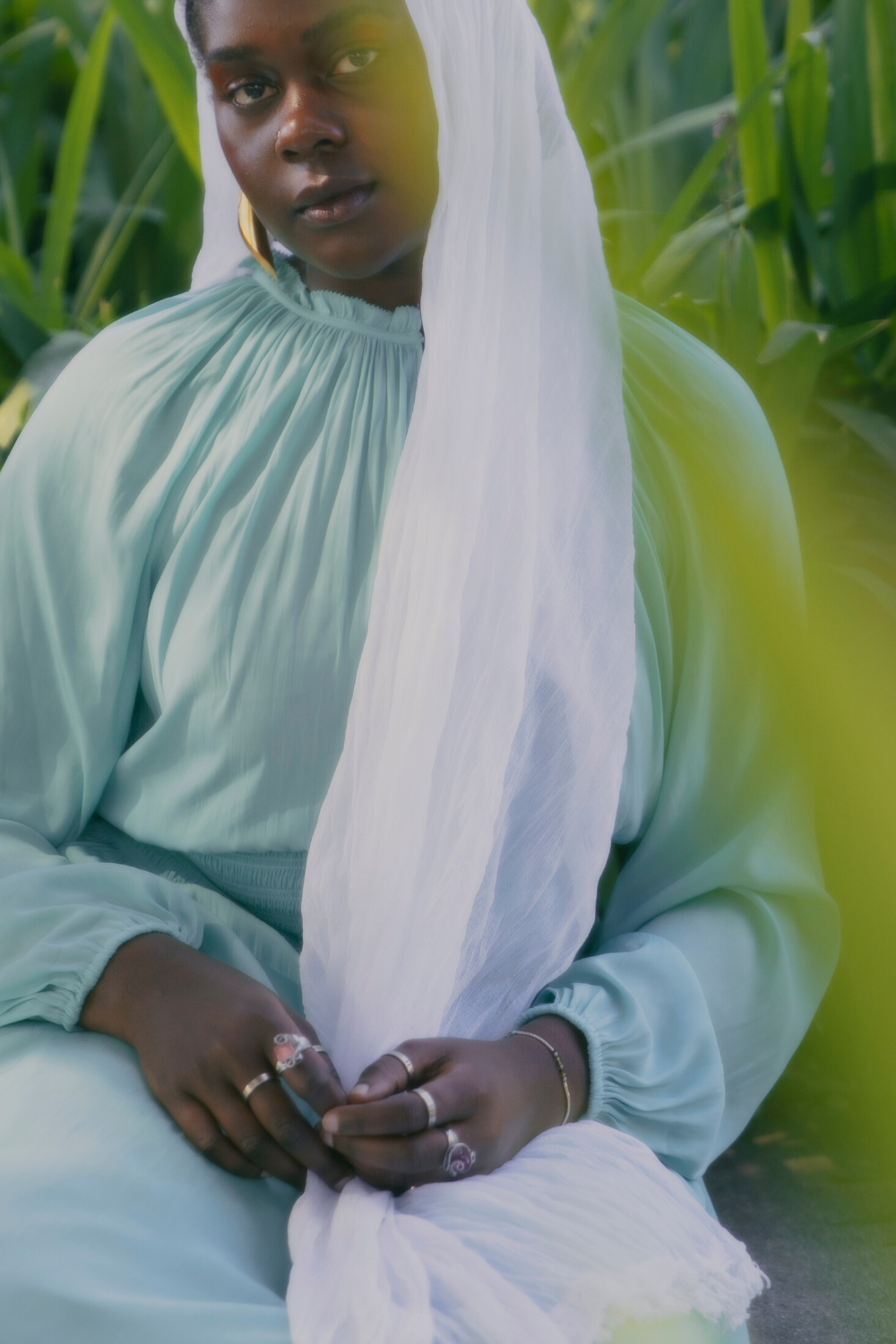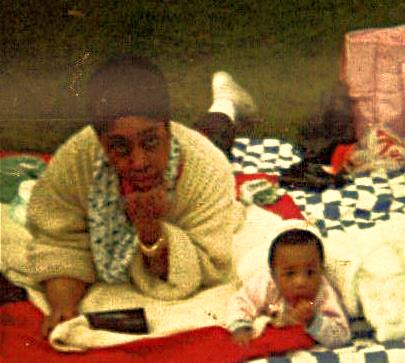
Wearing a scarf or head wrap is pretty common in the black community, in that sense I didn’t stand out too much when I started wearing the Khimar (Hijab) at age 12. But the reasons why black women in my neighborhood wore a scarf were vastly different from mine.
When I was around 10 years old I got a permanent relaxer —chemical hair straightener, back then it was a kind of ‘coming-of-age’ moment. For years you’d see your older cousins, sisters, and aunties get their hair ‘permed’ and year after year you were told you were ‘too young’ –until suddenly, you weren’t. I was thrilled to get my hair straightened and continued this tradition for the next 10 years of my life.
Both getting a relaxer and wearing a scarf were crucial turning points in my life from childhood to “womanhood”. Back then it was all quite simple. It wasn’t until I turned 19 and read an essay on black hair that I drastically shifted my point of view. I can barely remember its contents now, but it was impactful enough to make me ‘go natural’ and never look back.
This simplistic ‘coming-of-age’ ritual was fraught with self-hate, and discrimination, and attached to a history of white supremacist legislation. With the exception of ‘Rastafarians’ and African head wraps donned on occasion by black women in my community, the scarf was reserved for the moments when your hair wasn’t ‘done’. And ‘done’ meant straightened.
We’d make fun of anyone whose ‘roots’ were showing and tease each other that we “needed” to get a perm. We’d make fun of the little curls that refused to lay flat at the back of our head, we’d wrap our hair around our head and cover it at night to make our straight edges last. Such was the banter and ritual mixed in with a disdain for our natural tresses.
But this wasn’t just a self-imposed hatred. Laws like the Tignon laws forced black women in America to cover their hair —whether out of their white counterparts’ jealousy or hatred, it was decided that our hair was unfit for public display. Only recently have some laws changed or come into place that attempt to end discrimination against black women’s traditional hairstyles —cornrows and twists, or simply our hair’s natural way of being —“puffs” and afros.
Even as natural hair becomes more appreciated and accepted by black women ourselves and the larger society, it is often the “least offensive” form of natural hair, that which is looser, curlier, and most often associated with mixed race rather than mono-racial black women.
The moment I became a Hijabi I didn’t immediately detach myself from this disdain for natural hair, you may have noticed in the aforementioned timeline, that it was 7 years after wearing the scarf that I stopped perming my hair. No longer having to show my hair in public didn’t stop me from wanting to live up to the beauty ideal in private.
From my limited experience, black Muslim women have just as complicated of a relationship with our hair as our non-Muslim counterparts. The hair hierarchy doesn’t stop because we cover our hair, and it doesn’t remove its infiltration into our psyche because we can no longer be publicly discriminated against because of it. Many of us still struggle with loving our hair, caring for our hair, and teaching our daughters to do the same.
While hijab is not an instant cure for hair hate, it can help. With the removal of public “other-discrimination,” we are only left with the removal of self-discrimination. And our connection to our Lord should guide us to love what He created. If we can love it — our natural hair as black women, as an extension of loving Him that too can be an expression of faith.
At the very least we can’t slip on a scarf and slip into oblivion, the culture of hatred toward natural hair is still alive and well, and Muslim black women have the tools to fight against the internalization of that hate —if we choose to use it. And Allah knows best.
___
Note: While I couldn’t resist the urge to neatly wrap up this post I fully acknowledge that the issues and solutions, around black hair, are far more complicated than this post can address. I didn’t touch on the ongoing discrimination black women face —even as children, nor did I mention black men’s contribution to black women’s negative self-image. I didn’t mention the problematic nature of black women’s hair being so politicized… I also didn’t touch on any of the work that has been done –including by black Muslims, to call out self and other discrimination around black hair and has been successful in shifting the conversation around this issue in a more positive and productive light. Lastly, despite all the issues around black hair, it should also be mentioned how much our hair also attracts love and admiration for its uniqueness. If you’re a black woman reading this I’m sure you’re well aware of all of this and if you’re a non-black person reading this I’m confident that this post gave you a decent introduction to issues surrounding black hair. Please check out the hyperlinks to further explore.
Related:
- Black Muslims and Black Muslim Issues https://bythefigandtheolive.com/blacklivesmatter
- Is African American Style Unislamic? https://bythefigandtheolive.com/qa-aastyleunislamic/
- A Muslim Woman Shares How She Uses Her Hair as a Form of Resistance https://www.byrdie.com/muslim-haircare





Beautifully said. It is complicated and I love how you wove the complexities together in this introductory discussion
Alhumdulilah, thanks so much Keda 🙂